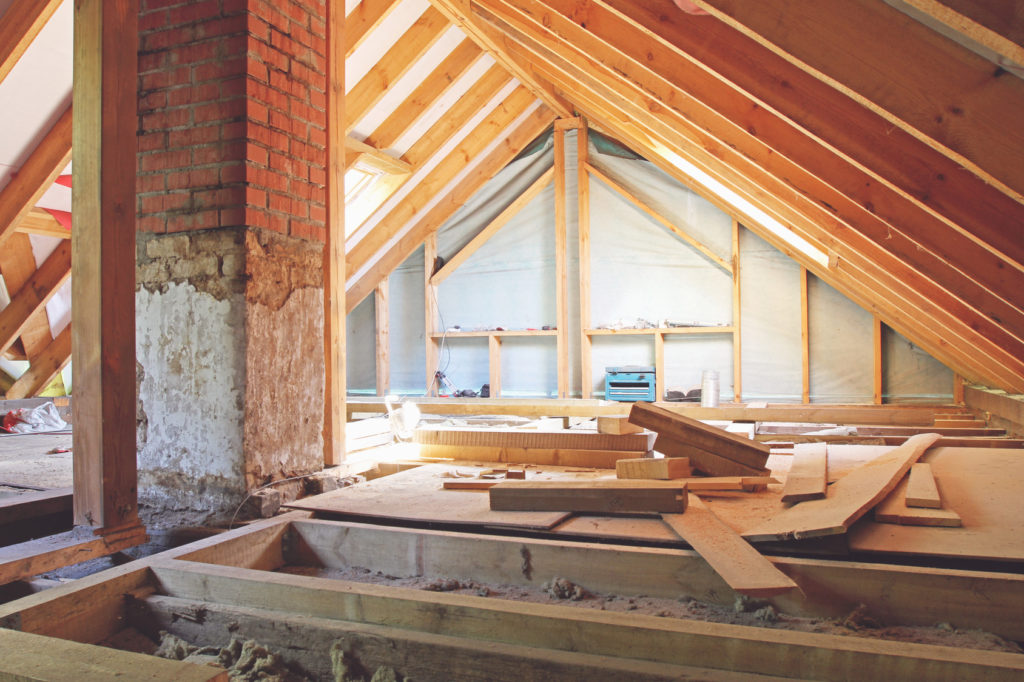How to Ventilate Your Home’s Attic
May 31, 2023How to Ventilate Your Home’s Attic
The Environmental Protection Agency’s Energy Star Program provides detailed information about how to properly ventilate your attic for maximum energy efficiency and cost savings. An effectively ventilated attic, along with proper air sealing and insulation, will make your home more comfortable and energy efficient while preventing roof damage that can be caused by heat and moisture. This could take the form of mold and mildew, damaged roof decking, damaged shingles, and, in colder regions, ice dams. Ice dams can prevent water runoff, which may lead to water backing up underneath the shingles and possible leaking. For the integrity of your roof in addition to energy conservation, air sealing, insulation, and ventilation for your attic is very important.
Here is a step-by-step guide to making sure your attic is properly ventilated.
- Inspect the Attic – Before doing any air sealing, insulating, or ventilating work yourself, examine your attic. If your house’s attic has any active knob and tube wiring, vermiculite insulation, kitchen or bathroom fan ventilation outputs, wet insulation indicating a leaking roof, an unvented gas fireplace or kerosene heater or attic floorboards, additional work must be done before the following steps are taken. If you see rotting floor joists or rafters, this can also be a sign of bigger problems that require a professional.
- Locate and Seal Air Leaks – Key places you should look for air leakage include an attic hatch, wiring holes, plumbing vents, recessed lights and open soffits. Focus on large holes in the attic, such as where the attic’s floor meets inner and outer walls, dropped soffits and, in finished attics, in cavities under attic side-walls or kneewalls. Push away insulation to check for dropped soffits and clear out any insulation that may have fallen in. Seal any leaks or holes in attic air ducts with metal tape or mastic sealant.
- Add Attic Insulation, if Needed – Insulation should be well above the floor joists. It should also be evenly distributed. To install insulation out to the eaves, make sure you install rafter vents (also known as insulation baffles). Also, don’t cover soffit vents with insulation. It is very important not to block airflow.
- Understand the Importance of Ventilation in Your Region – In especially hot locations, proper attic ventilation moves heated air out of the attic, which will remove moisture and protect the roof’s shingles. The insulation you put down will keep the heat from moving into the house. In cold regions during the winter, having a well-ventilated attic keeps the space cold, which will reduce the chance of ice dams forming. If you’ve sealed and insulated the attic, warm air and moisture from the home won’t enter in. The heat will be kept where it belongs, keeping your home energy efficient.
- Know the Different Kinds of Attic Vents – A Soffit Vent is a screened vent that lets air flow into the attic or below the roof’s sheathing. Soffit vents keep an attic cool and helps moisture evaporate. A Gable Vent is a screened vent that is used near the peak of a roof gable. A Rafter Vent leads from the soffit into the attic through a space between the attic’s rafters. It allows air to flow freely past insulation. A Ridge Vent is a screened vent that is installed along the roof’s top ridge.
- Get Expert Guidance to Install Attic Vents – For details in how to install attic vents and other important issues to consider, see the DIY Network’s “How to Install Attic Soffit Vents” and Energy Star’s Do-It-Yourself Guide.


